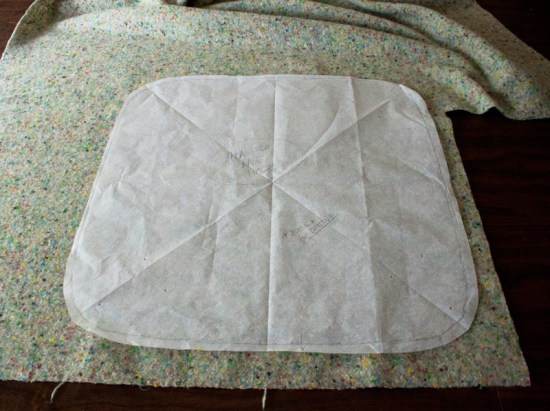wiwo wednesday: removing staples from the chair
My biggest project this week has been working, slowly but surely, to remove as many staples as I can from this chair. I started the chair back in November (see this post for a before picture) and it’s been sitting in a corner of my bedroom, raw but filled with staples, ever since.
This week has been a little bit hectic and a little bit stressful, and I wanted a project that I didn’t have to think about. Removing staples has been the perfect brainless task: I don’t have to think, but I still feel productive. To keep myself entertained, I’ve been listening to an audiobook while I work. I download them for free from the library and they make a huge difference in my motivation for tedious tasks.
I got this fantastic staple remover for Christmas and I can’t imagine a tool doing a better job on the nearly-flush staples I’m encountering. This chair is just covered in staples, layer after layer, so the tool isn’t a miracle worker: I have a lot of work ahead of me. But I would have given up ages ago without it.
My process so far has been to loosen the staple using the staple remover, rock the remover back and forth a bit to start to pry the staple out, and then grab the staple with jewelry pliers to coax it the rest of the way. This chair has two types of staples. One are a thin, flexible metal, and they’re very easy to remove; the others are a brittle metal, most likely a steel alloy, that tend to crack and break before I can remove the whole staple. When I remove one of these steel staples without breaking it, I get a rush of success. Those successes are few and far between.
I’ve made it through most of the side panel and the lower front panel this past week. Again, this is definitely going to be a lot of work. I’ve filled almost a whole coffee can with staples and threads. Pro-tip: the coffee can is perfect for plunking staples into. If you’re more cautious than I am, cut a slit in the lid so you’re safe even if you tip the can over! I have also been keeping my mini shop vac handy, and briskly vacuuming the floor each night when I’m done.
The biggest reason I’ve started back into this project is that I finally found a fabric for it! I’d been debating for months about which direction to take the chair. On the one hand, it would be super fun to use a bold, graphic print and turn this medium-sized chair into a statement piece. But, on the other hand, this project is going to be a lot of work and I want the result to be able to blend into any of my future homes. I didn’t rush the decision. While I love fabric shopping, I often hate fabric shopping for specific projects… it can be intimidating and overwhelming to try and make the perfect choice.
This fabric came to me, as fabrics often do, without any effort on my part. I found it at the thrift store. The picture above is super lame, but the fabric is absolutely ideal. It’s thick, upholstery weight, with a diagonal denim-style weave and a soft, brushed feel. It’s light gray with a good amount of visual texture – the threads vary from white to dark gray – and there are even a few small “nubs” in the weave, something I always like. It will match nicely with my hassock and I’ll have the freedom to decorate it with any pillow that I choose!
Hopefully there aren’t too many more evenings until the chair is staple-free, but I’m not counting down yet. Wish me luck. Someday, this chair will be soft and gray!
Marie started wiwo wednesday: What I’m Working On. I try and join her as often as I can to give you a peek into my creative process and my works-in-progress. See all my wiwo wednesday posts here.




































